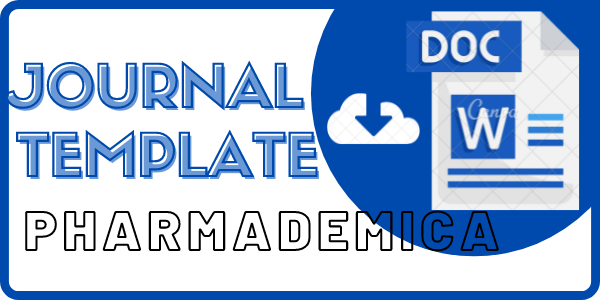Overview of Antibiotic Prescription in the Ear, Nose, and Throat (ENT) Clinic at Hospital X, Situbondo Regency
DOI:
https://doi.org/10.54445/pharmademica.v4i2.70
 Abstract View:
Abstract View:
148
 PDF downloads:
PDF downloads:
121
Keywords:
Prescription, Antibiotics, Ear Nose ThroatAbstract
Antibiotics are chemical compounds used to treat bacterial infections by inhibiting the growth or killing bacteria. Antibiotics are classified as prescription medications, meaning their use must be based on a doctor's recommendation and prescription. The selection of antibiotics should be based on information about the spectrum of microorganisms causing the infection, microbiological test results, pharmacokinetic and pharmacodynamic profiles of the antibiotics, as well as their affordability. The prescribing of antibiotics in hospitals, both in terms of the types of antibiotics used and the medical reasons for their use, may vary depending on the guidelines for antibiotic use at each hospital. This study aims to provide an overview of antibiotic prescribing in the Ear, Nose, and Throat (ENT) clinic at Situbondo District Hospital. The research design is descriptive observational. The samples used were all doctor prescriptions from the ENT clinic at the hospital, filled at the outpatient pharmacy depot during November 2023. The sampling technique employed was total sampling, resulting in 110 prescriptions. The findings showed that the most commonly prescribed antibiotics were Co-Amoxiclav (66.2%), Cefixime (20.0%), Levofloxacin (7.6%), Azithromycin (4.1%), and a combination of Polymyxin B Sulfate and Neomycin Sulfate (2.1%). Regarding the duration of antibiotic therapy, oral antibiotics were prescribed for 2 to 7 days, while ear drops were used for 20 to 27 days.
Downloads
References
Amin, L. Z. (2014). Pemilihan antibiotik yang rasional. Medicinus, 27(3), 40–45.
Astiani, R. (2016). Pengetahuan Mahasiswa S1 Farmasi Universitas 17 Agustus 1945 terhadap cara penggunaan Antibiotik. Social Clinical Pharmacy Indonesia Journal, 1(2), 27–34.
Cazzola, M., Vinciguerra, A., Beghi, G. F., Paizis, G., Giura, R., Madonini, V., Fiorentini, F., Consigli, G. F., Tonna, M., Casalini, A., & Legnani, D. (1995). Comparative evaluation of the clinical and microbiological efficacy of co-amoxiclav vs cefixime or ciprofloxacin in bacterial exacerbation of chronic bronchitis. Journal of Chemotherapy (Florence, Italy), 7(5), 432–441. https://doi.org/10.1179/JOC.1995.7.5.432
DiPiro JT, Talbert RL, Yee GC, Matzke GR, Wells BG, P. L. (2017). Pharmacotherapy: A Pathophysiologic Approach, 10e. McGraw Hill.
Dyar, O. J., Yang, D., Yin, J., Sun, Q., & Lundborg, C. S. (2020). Variations in antibiotic prescribing among village doctors in a rural region of Shandong province, China: a cross-sectional analysis of prescriptions. BMJ Open, 10(6), e036703. https://doi.org/10.1136/bmjopen-2019-036703
Ghassani, A. A., Sanna, A. T., Juliana, A., Harun, A., & Wartati, S. (2024). Gambaran Kejadian Gangguan Keseimbangan Perifer pada Pasien di Poliklinik THT di Rumah Sakit Ibnu Sina Periode Januari 2018-Juli 2023.
Kementerian Kesehatan Republik Indonesia. (2016). Peraturan Menteri Kesehatan no 72 Tahun 2016 Tentang Standar Pelayanan Kefarmasian di Rumah Sakit. Jakarta: Kementerian Kesehatan Republik Indonesia.
Lekok, W., Irwanto Natadidjaja, R., & Dharmayanti, A. (2021). Regulasi Antimikroba Sistem Prospektif (Raspro): Sistem Tata Guna Antibiotik Untuk Kendali Mutu Dan Kendali Biaya Di Rumah Sakit Sebagai Upaya Menurunkan Beban Bpjs Kesehatan. Media Bisnis, 12(1), 83–88. https://doi.org/10.34208/mb.v12i1.906
Lin, L., Sun, R., Yao, T., Zhou, X., & Harbarth, S. (2020). Factors influencing inappropriate use of antibiotics in outpatient and community settings in China: a mixed-methods systematic review. BMJ Global Health, 5(11), e003599. https://doi.org/10.1136/bmjgh-2020-003599
Park, M., Lee, J. S., & Park, M. K. (2019). The Effects of Air Pollutants on the Prevalence of Common Ear, Nose, and Throat Diseases in South Korea: A National Population-Based Study. Clinical and Experimental Otorhinolaryngology, 12(3), 294. https://doi.org/10.21053/CEO.2018.00612
Pichichero, M. E. (2020). Considering an otitis media antibiotic change. Journal of Pediatrics, 222, 253–257. https://doi.org/10.1016/j.jpeds.2020.04.021
Sari, M. P., & Desiani, A. (2023). Diagnosa Penyakit THT (Telinga, Hidung, Tenggorokan) menggunakan Metode Certainty Factor pada Sistem Pakar. Journal of Artificial Intelligence and Software Engineering, 3(1), Article 1. https://doi.org/10.30811/jaise.v3i1.3902
Schilder, A. G. M., Chonmaitree, T., Cripps, A. W., Rosenfeld, R. M., Casselbrant, M. L., Haggard, M. P., & Venekamp, R. P. (2016). Otitis media. Nature Reviews Disease Primers, 2. https://doi.org/10.1038/nrdp.2016.63
Susanto, A. (2020). Buku Ajar" Bakteriologi (Carrier Penyakit Typus). E-Book Penerbit STIKes Majapahit, 1–85.
Downloads
Published
How to Cite
Issue
Section
License
Copyright (c) 2025 Solikhati Ika Nanda, Farid Zulkarnain Nur Syah

This work is licensed under a Creative Commons Attribution-ShareAlike 4.0 International License.









.png)








